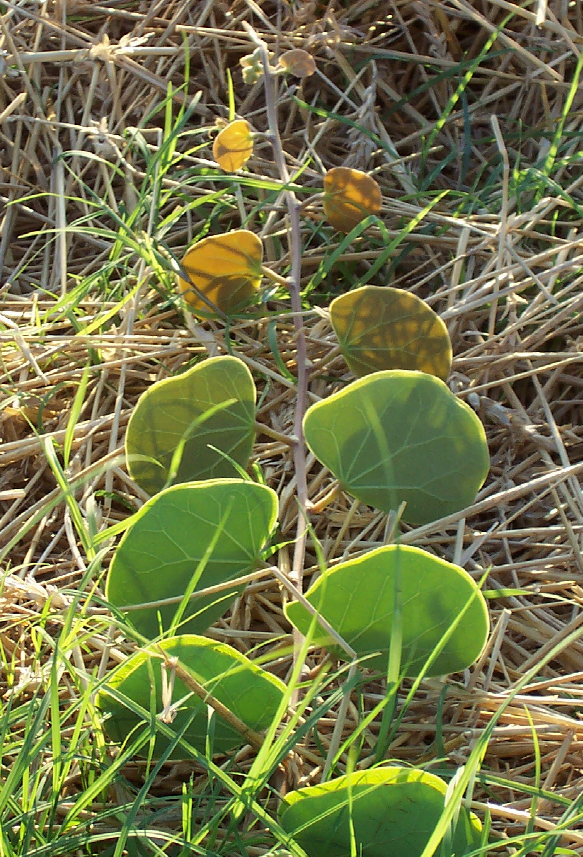! Nouveau site ici !
Vita > Plantae > Magnoliophyta > Magnoliopsida > Fabales >
Fabaceae > Tylosema
Tylosema esculenta
(Marama)

 | ****
| ****
Vita > Plantae > Magnoliophyta > Magnoliopsida > Fabales >
Fabaceae > Tylosema
Tylosema esculenta
(Marama)

Une herbe ou un arbuste. Il grimpe et continue de grandir d'année en année. Il a des racines tubéreuses. La tige repose sur le sol. Ils peuvent mesurer 6 m de long. Les parties inférieures peuvent être lig... (traduction automatique)
→suite
⬀
Le  donne accès au menu
donne accès au menu (c'est votre point de repère) 😊 ;
En dessous vous avez la classification, à partir de la vie (Vita, premier rang) jusqu'à la classe au dessus de la plante, dont vous trouvez ensuite le nom scientifique/botanique (latin) puis le nom commun (français), le cas échéant ;
C'est aussi un lien vers la fiche complète (tout comme la ✖, en bas à droite, et le +, en dessous de la description) ;
Vient alors l'illustration (ou ce qui la remplace, en attendant), la comestibilité :
Et en bas
⬂

![Illustration Tylosema esculenta, Par Pole-Evans, I.B., Phillips, E.P., Dyer, R.A., flowering plants of South Africa (flowering plants of Africa) [originals] Fl. Pl. S. Afr. vol. 33 (1959) t. 1311, via plantillustrations Illustration Tylosema esculenta, Par Pole-Evans, I.B., Phillips, E.P., Dyer, R.A., flowering plants of South Africa (flowering plants of Africa) [originals] Fl. Pl. S. Afr. vol. 33 (1959) t. 1311, via plantillustrations](../inc/images/illustrations/tylosema_esculenta.jpg )



